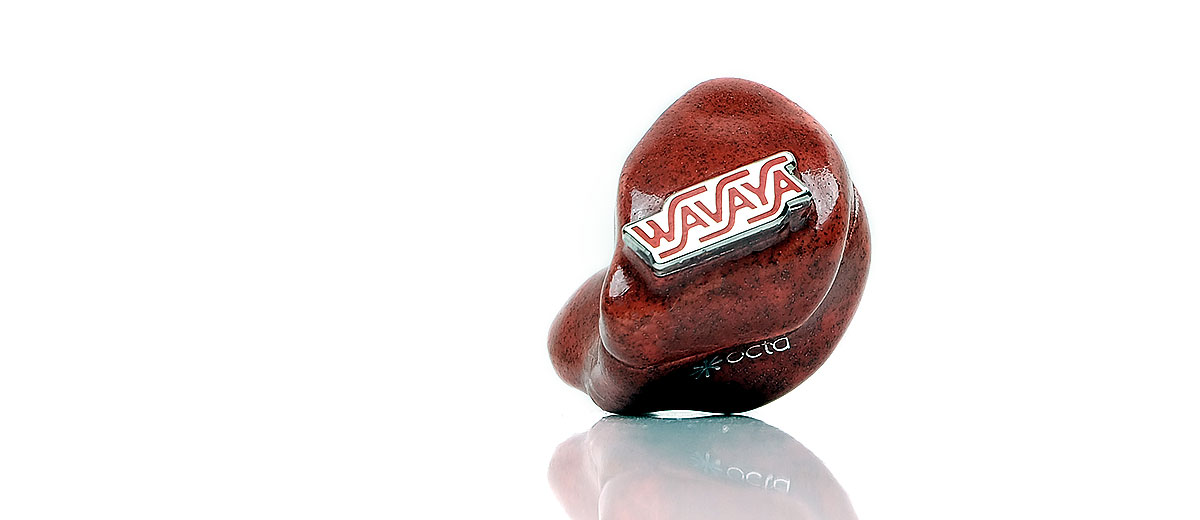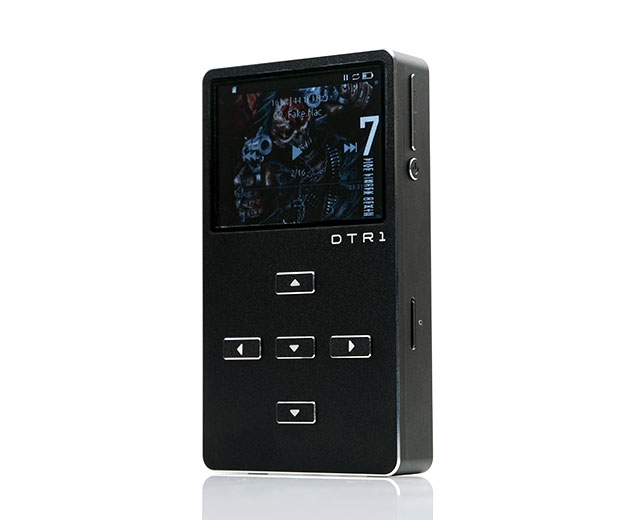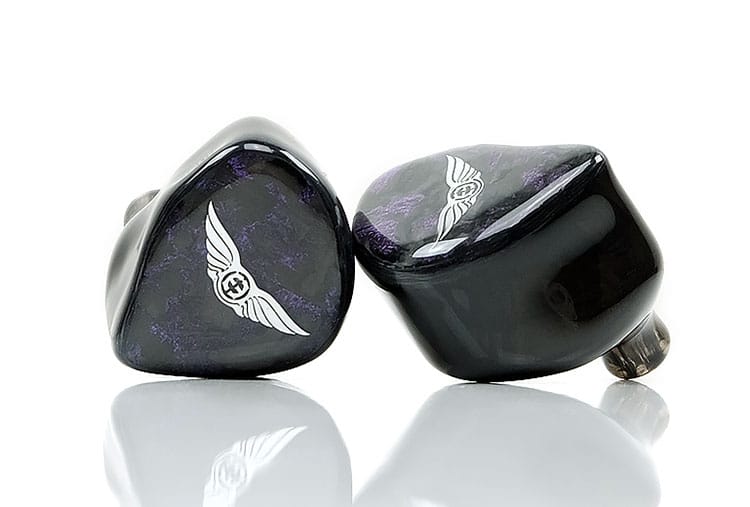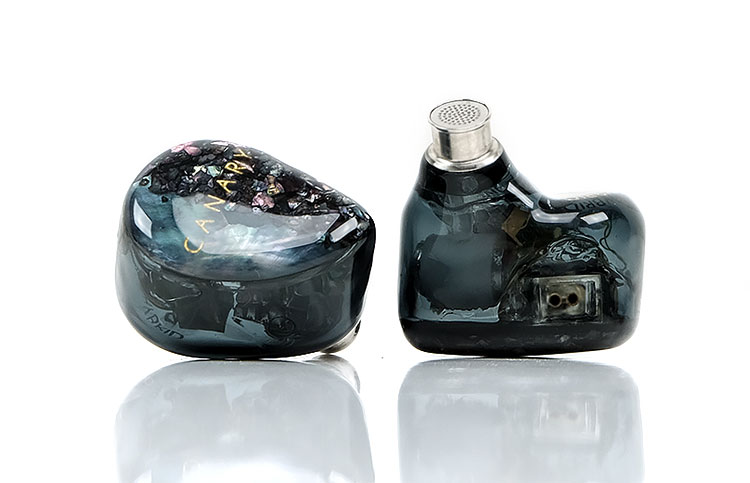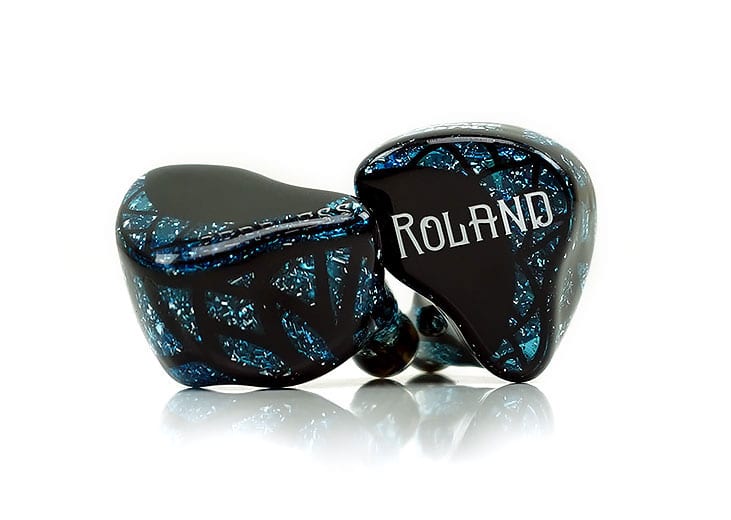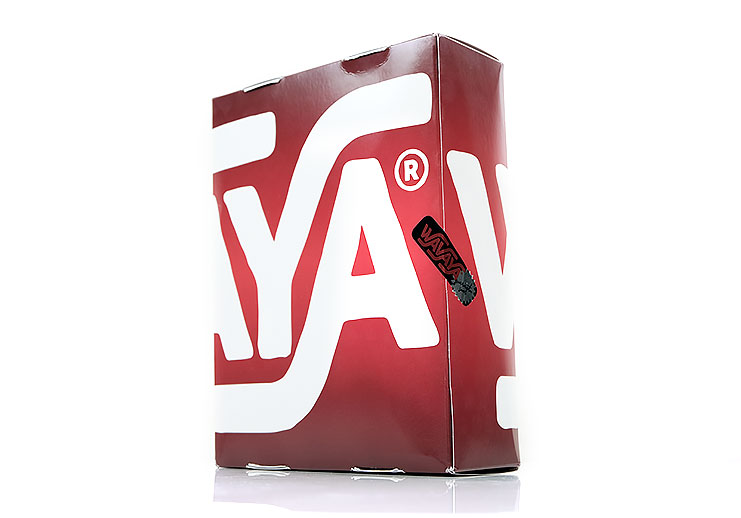Synergy
Efficiency & Noise
The Octa is rated at 19.5Ω and 100dB SPL. That is not unusual for electrostatic driver monitors currently. The SPL is low primarily due to the amount of current required by this new Sonion system and most competitors have equally low SPL ratings. So, whilst the Octa is not going to require huge output power, it will require more than the usual current compared to all BA monitors and a few electrostatic ones also.
We tested the Octa on 3 DAPs, the impressive DTR1 from Dethonray, Fiio’s M11, and Lotoo’s Flagship PAW Touch Gold. None of them had issues driving the Octa and none of the pairings presented any noticeable hiss or background noise.
With the DTR1, however, moving to medium gain seemed jive better in terms of the volume control when paired with the Octa. The DTR1 only has a single-ended output so tweaking the gain levels is the only option to get a moderate boost in volume.
With the M11, I did not really find a huge need to switch output jacks for volume but it did sound punchier with the M11’s better-balanced output. The noise control on the M11/Octa pairing was very good with next to no hiss.
The Lotoo PAW Gold Touch was my favorite of the three with the Octa. No issues on power, no issues on current, and a deathly black background with excellent levels of headroom overall.
Source Pairing
Punchy
I honestly prefer a source that is rich organic sounding or powerful with the Octa presentation. Given the BA backbone, something overly neutral and clean robs it of a bit of needed body and physicality. I am not talking about anything overly lush or romantic sounding but rather something that will retain a bit of lower-end power and lower-mids warmth, even at the cost of absolute detail.
For example, the DTR1 was the most engaging of the three DAPs with the most agreeable timbre with the Octa. It was very smooth in delivery without sounding overly rounded or brittle. That forward vocal did not sound lean or shouty either. You get a decent low-end also from that BA dual vented subwoofer inside the Octa, better than even the Cayin N6i which tended to sound a lot more reserved.
The N6ii is a little more even sounding with the Octa and can deliver better detail but its low-end is lacking, even with the A01. I keep reverting to MSEB in the HiBy app to ramp up the low-end to get the same weighting the DTR1 is doing with its stock sound.
Reserved
The FiiO M11 and Lotoo PAW Touch Gold are both more on the neutral side.
Both have a cleaner top-end with more sparkle than the N6ii and DTR1 with the Octa. However, the Lotoo gets away with it due to its better dynamic range and outstanding instrumental separation/imaging. It sounded very solid, very fast, and precise with the Octa and I could listen to it for hours.
The M11 paints more of a lighter tone with the Octa and whilst it is a shade warmer on the mids than the Lotoo, it lacks the same separation and dynamic punch that I want from my DAP when paired with the Octa. The Lotoo PAW Gold Touch and DTR1 deliver that bet it warm or clean, the N6ii and the M11 sound a little too reserved as a source without EQ.
Select Comparisons
Empire Ears Wraith
$3499
Technical
The key overlap between these two monitors is the use of a quad-electrostatic driver and BA drivers with no dynamic driver implementation in their configurations. This is quite different from the vast majority of electrostatic monitors that use a mix of dynamic, BA, and electrostatic currently on the market.
The configuration, (and price) between these two are quite different with the Wraith using a total of 7 BA and 4 electrostatic and the Octa using 4 BA and 4 electrostatic.
The driver groupings are also quite different between these two monitors. The exact configuration of the Wraith is 2 BA for the lows, 3 for the mids, 2 for the highs, and the quad e-stats for the super highs.
The Octa uses a double BA driver for the low-end which is a full range plus woofer with its own crossover covering the sub-to-midbass range. You then have a super double tweeter for the mid to upper mid frequencies and another full-range cover the upper bass to lower-mids. The electrostatic drivers are for the highs and super highs.
Beyond that, the Wraith is a standard acrylic build, (universal here) compared to the porcelain of the Octa. It is much smaller than the Octa and sits closer to your ear. The design does not have as much ‘pop’ nor does it seal as well but then it is universal.
Performance
The Wraith is rated at an intriguingly low 4Ω and a fairly sensitive 117dB SPL. That is miles away from what I would consider a more normal 100dB SPL and 19.5Ω rating of the Octa. Bear in mind, we have not yet done the full review of the Wraith but from our testing thus far both have no issues with DAP pairings.
I am going to keep an open mind on how much power the Wraith needs because we are still in heavy testing for it and there may a situation where the presentation changes with better amplifiers. However, with regards to current and volume, the Octa needs more than the Wraith.
With the Dethonray DTR1, we had to switch both to medium gain with the Octa needing a good 5-6 steps more than the Wraith. The FiiO M11 was fine in low gain for both monitors, however, there was a bit more hiss on the Wraith compared to the Octa for balanced. The Octa required more volume but that did not surprise me after the DTR1 experience.
With the Lotoo PAW Gold Touch, the experience was much the same with the Octa requiring more volume (5-6 steps low-gain). However, both were gloriously noise-free as you would expect with the Touch.
Tuning
The WAVAYA Octa is more neutral on the low-end than the Wraith which exhibits a bit more sub-bass weight and mid-bass warmth. That does mean the Wraith exhibits more depth and power to its staging compared to the Octa.
That affects the timbre of these two monitors with the Octa sounding a little cleaner and lighter in tone whereas the Wraith delivers a richer lower-mids instrumental timbre and a more forward vocal. That’s the weakness of the Octa, that lack of strong fundamental leaving the stage wide but slightly shallow and lacking in raw power.
That does not mean the Octa is a lean signature. Contextually, it is more neutral than the Wraith which exhibits more of laid back and liquid top-end in the battle of the quad-electrostatic treble signatures. That means the Wraith sounds a shade smoother and warmer but some might wish for more air as a result.
Overall, you get the sense of been drawn more into a more natural-sounding and engaging low-end and mids performance with the Wraith whereas the Octa offers a bit more treble presence and sparkle.
AAW Canary
SG$2,999.00
Technical
The Canary is also an electrostatic hybrid flagship. However, the configuration and numbers are different to the Octa. Unlike the Octa, the Canary uses a blend of dynamic, BA and electrostatic. The Octa uses only BA and Electrostatic but the Sonion driver count is 4 electrostatic drivers compared to just 2 for the Canary.
For BA they are equal at 4 apiece, however, the grouping on the Canary is 4 for the mids and a 6mm push-pull isobaric dynamic driver for the lows. The Octa uses a double BA driver for the low-end which is a full range plus woofer with its own crossover covering the sub-to-midbass range. You then have a super double tweeter for the mid to upper mid frequencies and another full-range cover the upper bass to lower-mids.
Like the Wraith, the Canary sent to me is a universal version so fitting is not as good and the level of isolation a step or two lower. The Canary is also made of acrylic so it handles a little different and feels different in your ear. The Octa is huge, loud and old in design compared to the Canary. Muted designs, however, work quite well for some and the Canary Pearloid finish is unique and tasteful.
Performance
The Canary is rated at 16Ω and 100dB SPL. That is not too far from the Octa’s 19.5Ω and 100dB SPL. In our real-world testing with our 3 chosen DAPs, the gap was minimal with a slight edge to the Octa for volume IMHO. Much of it may be down to tuning sensitivities with the slightly brighter upper mids of the Octa giving an illusion of being a little louder since I am more sensitive to forwardness in that region.
All 3 DAPs were fine with noise or hiss using both the Canary and the Octa. Neither will hiss with the likes of the M11 or the DTR1. I still prefer the Canary and Octa on medium gain for the DTR1, however, the Lotoo PAW Gold Touch can drive both was very little effort.
Tuning
The Canary exhibits a bit more low-end weight and extension, as you would expect from a dynamic driver low-end configuration. The Octa, however, has the better midrange and treble performance. It sounds more alive, more engaging and definitely more forward for vocal performances.
The Octa sounds marginally drier in lower-mids timbre with that all BA configuration and you do get more of that typical BA timbre to its instrumental texture. The Canary dynamic driver helps inject a better bass fundamental and a bit more body in lower-pitching instruments.
It is really those mids and treble that the Octa has the Canary’s number for presence. The Octa has much better instrumental separation compared to the Canary’s muted equivalent. The Canary sounds neutral, safe but definitely vocal presence is way back compared to the Canary.
Vocal timbre on the Canary is quite nice though and has a slightly more liquid overtone for male vocals compared to the drier Octa. The problem is when things get busy on the Canary the male vocals tend to get lost in the mix. I never got the same feeling with the Octa’s vocal positioning.
Both have an elevated 8-10k tuning on their treble but I prefer the Octa’s performance. There is a tiny steely or sharp partial overtone on the Canary treble that can affect percussion and some female vocal timbre. For me, the Octa treble sounds a bit more natural and accurate of the two.
Fearless Audio Roland
$958.55
Technical
The Roland is part of Fearless Audio‘s Paladin series which all feature a hybrid electrostatic configuration. The Roland is a 5-driver hybrid consisting of a dual Sonion electrostatic top-end, 2 BA for the mids, and a single dynamic driver for the lows.
The Octa has 4 BA and 4 electrostatic drivers with that complex grouping whereas the Roland keeps it simpler with 2 BA for the mids and the 2 stats drivers for the highs. The dynamic driver we assume to be around 10mm and covers the lows.
You can get the Roland in a custom configuration though this one is universal therefore the Octa will do a better job for passive isolation and seal. On the flip side, the acrylic Roland is much smaller and lighter than the WAVAYA Octa.
As a side note, the IPX Super BaX Linum cable of the Octa is superior for me on a physical level to the accompanying non-descript 152 strand single-crystal silver-plated copper wire of the Roland. It is much lighter than the Roland cable with a superior connection system IMHO.
Performance
Like the Wraith the Roland has an unusual set of numbers with a very low 5.8Ω impedance rating and a fairly typical hybrid 106dB SPL. The Octa’s 19.5Ω and 100dB rating will mean it is the slightly harder of the two to drive and for volume.
And true enough, in our real-world testing, the Roland went ‘louder faster’ on all our tested sources including the Lotoo Touch, FiiO M11, and the Dethonray DTR1. None of the source devices gave the Roland or the Octa any perceived noise or hiss issues so not the most efficient of monitors but that might be just fine for fussy “hiss hunters”.
Tuning
These are two very different sounding monitors and to be frank, the Octa is miles ahead on technicalities, never mind personal preferences. The Roland is dark, very dark indeed. To be fair, it has some great bass power and depth and I have no issues with the quantity and presence of the Roland dynamic driver on the lows. The mids are rich and thick and very intimate also but it does make the Octa very pristine and clean by comparison.
The Octa is far more open sounding in the mids and treble. The additional BA for the mids delivers a better resolution and pace for complex musical passages. Octa’s treble extension is so much better and that helps a lot with headroom delivering a superior instrumental separation and more engaging imaging. The Roland sounds a little smeared and congested by comparison and not as detailed in its mids reproduction. The lack of treble air just doesn’t help.
So, pick the Roland is you really want a dark, warm, and intimate tuning with power and weight but otherwise, the Octa’s more balanced and resolving signature is my pick.
Our Verdict
The WAVAYA Octa is a very unique custom monitor experience. I think it easily stands out from the crowd courtesy of those unusual designs and porcelain materials. Certainly, it is a coffee table conversation topic if ever you slap them down in a meet. The leather cases and ‘Vans-styled’ accessories are also a welcome break from the dominant customs market norms of titanium screw lids and Pelican 1010s plastic.
This is a nicely balanced hybrid electrostatic hybrid monitor with a bit more emphasis on mids/vocals over a pounding bassline. This is also a monitor that allows the treble to breathe with some fantastically sweet-sounding vocals timbre.
Do I wish there was a bit more of that dynamic driver power and bass fundamental to offer more “drive” or PRaT in the Octa? At times, yes, and that is perhaps the one weakness you would do well to consider when opting for the Octa.
It is not that WAVAYA forgot, they do actually state ‘bass flatness’ as part of their Octa description so I would consider this more of a mids and detail specialist monitor than anything else.
Overall, a very welcome alternative out there in the hybrid electrostatic hybrid market and definitely one of the more memorable ones currently available. The price is also very reasonable for the performance which is a welcome statement for 2020.
Wavaya Octa Specifications
- Shell and lid material: Fine porcelain glazed with lead-free, water-based glazes suitable for food use.
May contain mica powders. Guaranteed hypoallergenic - Number of bores: 3 or 2 depending upon the client’s ear canal
- Passive insulation: Up to 26db (depending upon ear shape and design)
- Cable: 50″ Linum™ G2 Super BaX™ cable with T2™ connectors
- Connectors: T2™ (to the CIEM) and straight jack plug 2.5mm (1/8″) to the sound source
- Configuration: 3 Balanced armature drivers engineered with custom crossover, band passing, and damping,
4 electrostatic tweeters separately powered - Frequency response: 5Hz to 22kHz
- Input sensitivity : 100 dB @ 1 kHz, 1mW
- Impedance: 19.5Ω at 1kHz

